How do sanderlings manage?
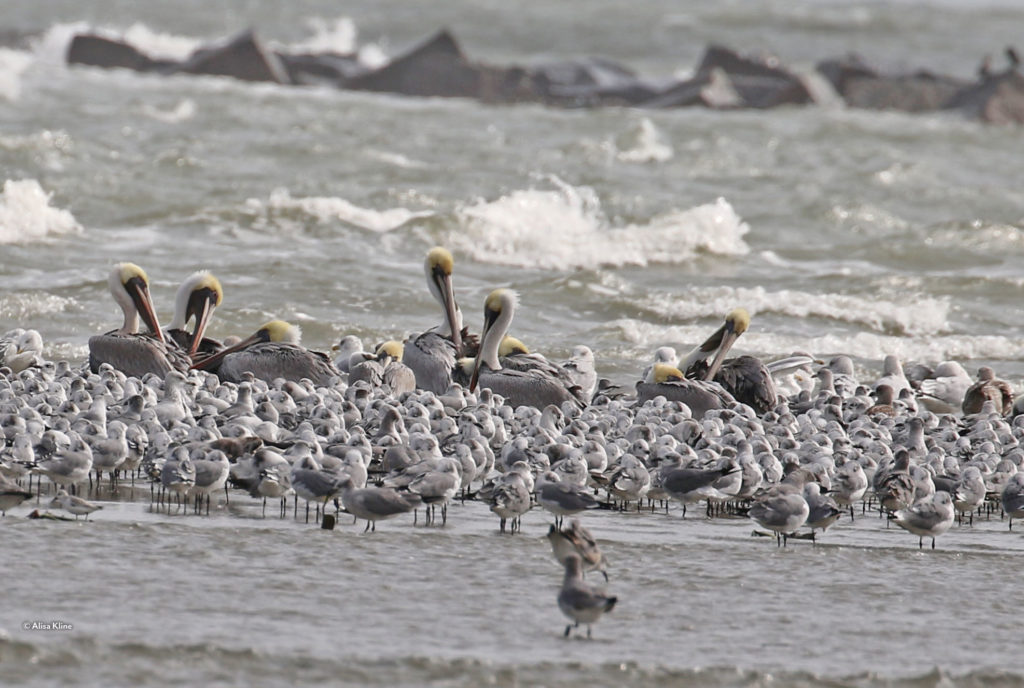
I spent Thanksgiving day in Galveston on east beach because there are always tons of birds on east beach, right at the point where the ship channel and the Gulf meet up. This year, I really needed to be surrounded by wildlife and Galveston did not disappoint. Camera in hand, I immediately settled into my endless quest to figure out how sanderlings manage.
Sanderlings are the small white birds that are always two steps ahead of you when you walk on the beach. They hunt in the wet zone — where the last bit of a wave laps an inch or so of water onto the sand before slipping back into the Gulf.

Sanderlings eat what the waves bring in and what lives an inch or two under the sand. The science says that they also eat algae when better food sources aren’t available. Still, I think the sanderling above wasn’t eating algae as much as that she got some caught in her mouth while looking for the more typical mollusks and crustaceans. Same with the sanderling below. You can see a small green thread surrounded by droplets of water at the tip of her beak.
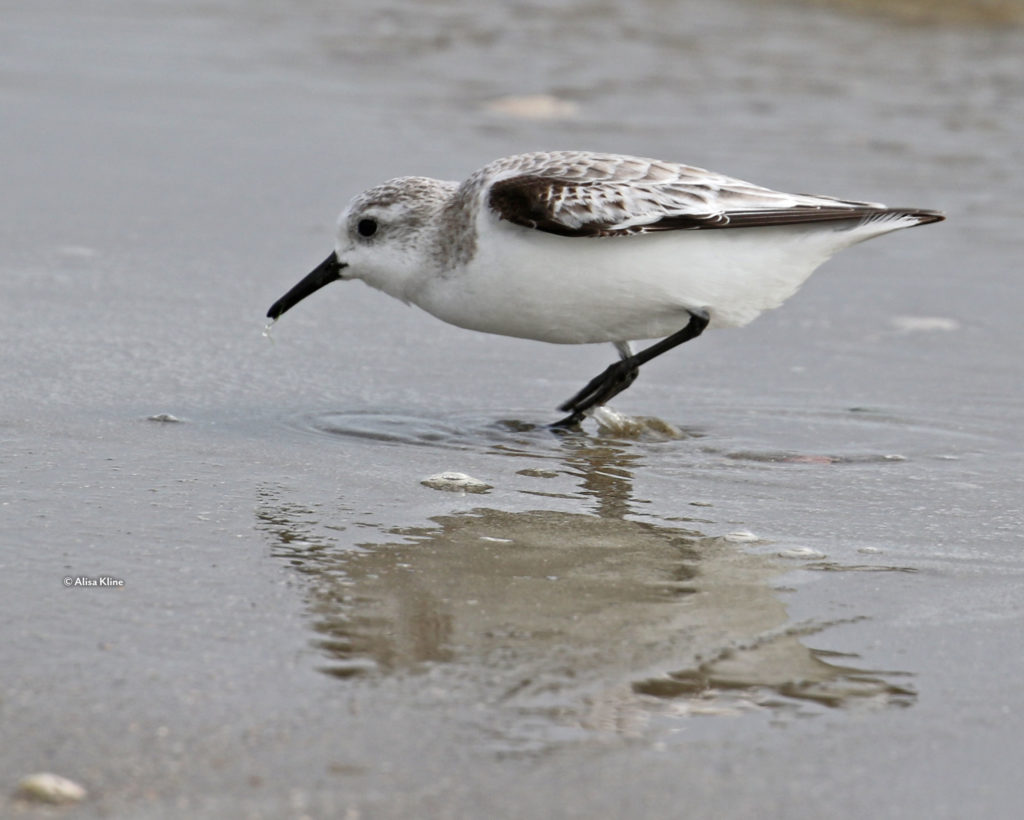
I am not pointing out these details to impress with the quality of my lens. It is to point out that I have chased them with a camera and tried hard to get a photo of what they eat without any success. This frustrates me no end. This is the most common bird on the beach and it completely thwarts my curiosity.
This ruddy turnstone, for example, made a great show of catching whatever this is below. Probably a mollusk of some sort, but maybe just a small tasty bit of something larger. Point is, I managed to photograph it.
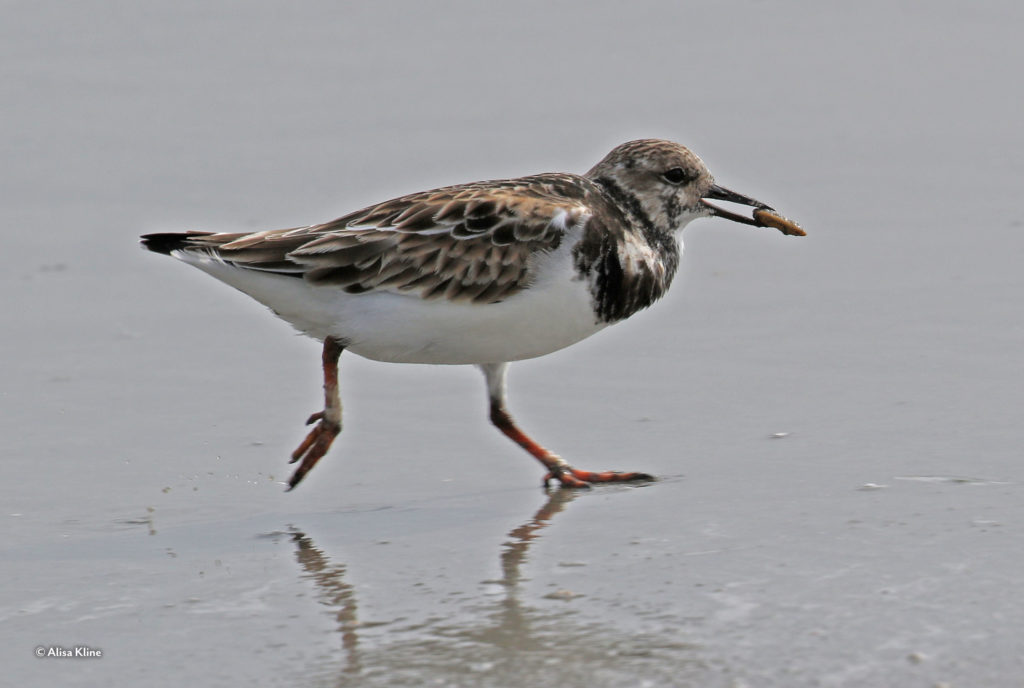
Ruddy turnstones are named because they are a ruddy color and they hunt by turning over stones and gobbling up whatever is underneath them. There are two turnstones, the other is the black turnstone and I’ll leave it to you to guess why. The black turnstone is limited in range to the Pacific coast of the U.S. The ruddy turnstone isn’t so confined. While not as common as sanderlings on our beaches, the turnstone joins the sanderling as being one of the most cosmopolitan birds in the world. On any sandy beach in the world, when it isn’t summer (breeding season) there are three birds you will likely run into: a sanderling, a turnstone, and a whimbrel. I didn’t run into a whimbrel in Galveston. I never run into a whimbrel. But I did see this wonderfully marbled godwit who decided to pose for me and I am eternally grateful.
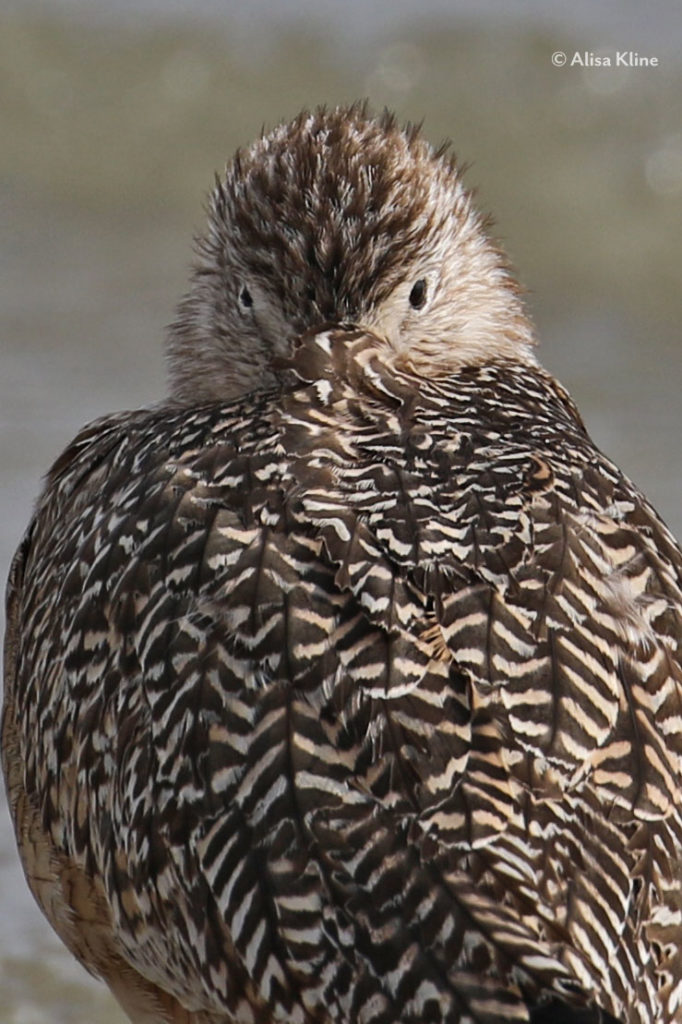
And because this is a nature blog, you should know what this lovely bird looks like when it isn’t turned all the way around to preen its back.
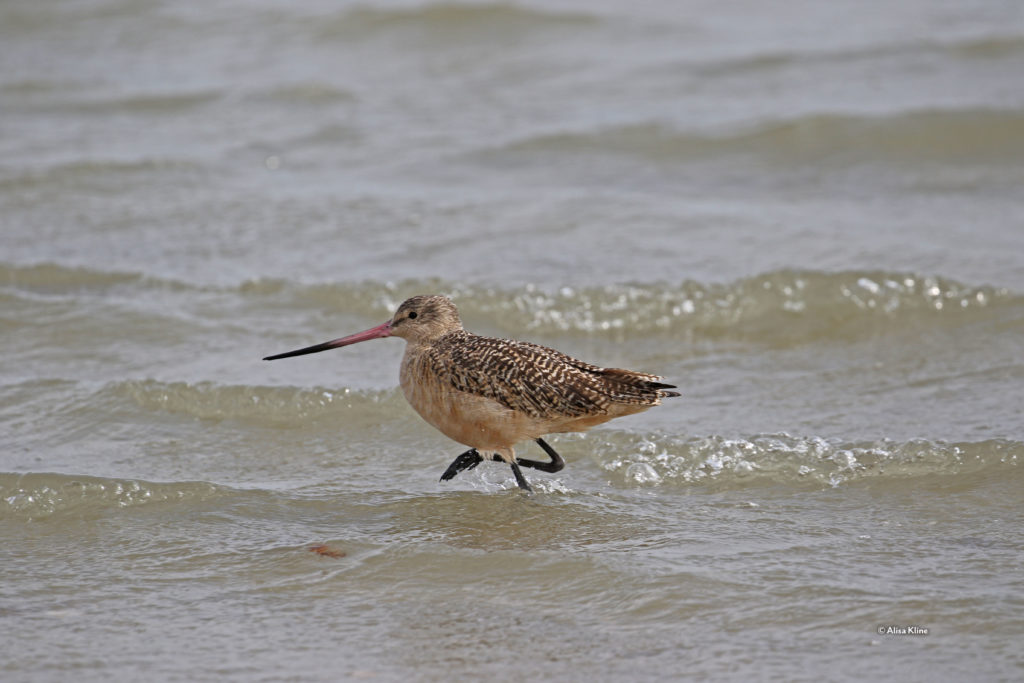
Marbled godwits are decidedly not cosmopolitan. They are North American birds. They breed in the northern central plains of the US and Canada and spend the winter months on the coast. Compared to the turn bills and sanderlings, the marbled godwits are practically stay-at-homes.
Sanderlings and ruddy turnstones both breed in the high arctic tundra, the very top of the world, and spend their winters anywhere there is a sandy beach. Since it is a very long flight to the far arctic tundra, if a particular sanderling isn’t planning on participating in the breeding fiesta (perhaps they are too young or too old) and their winter grounds are able to support them through the summer, they don’t bother making the flight. This is why this bird, that travels so far can be found at all times on Galveston beaches.
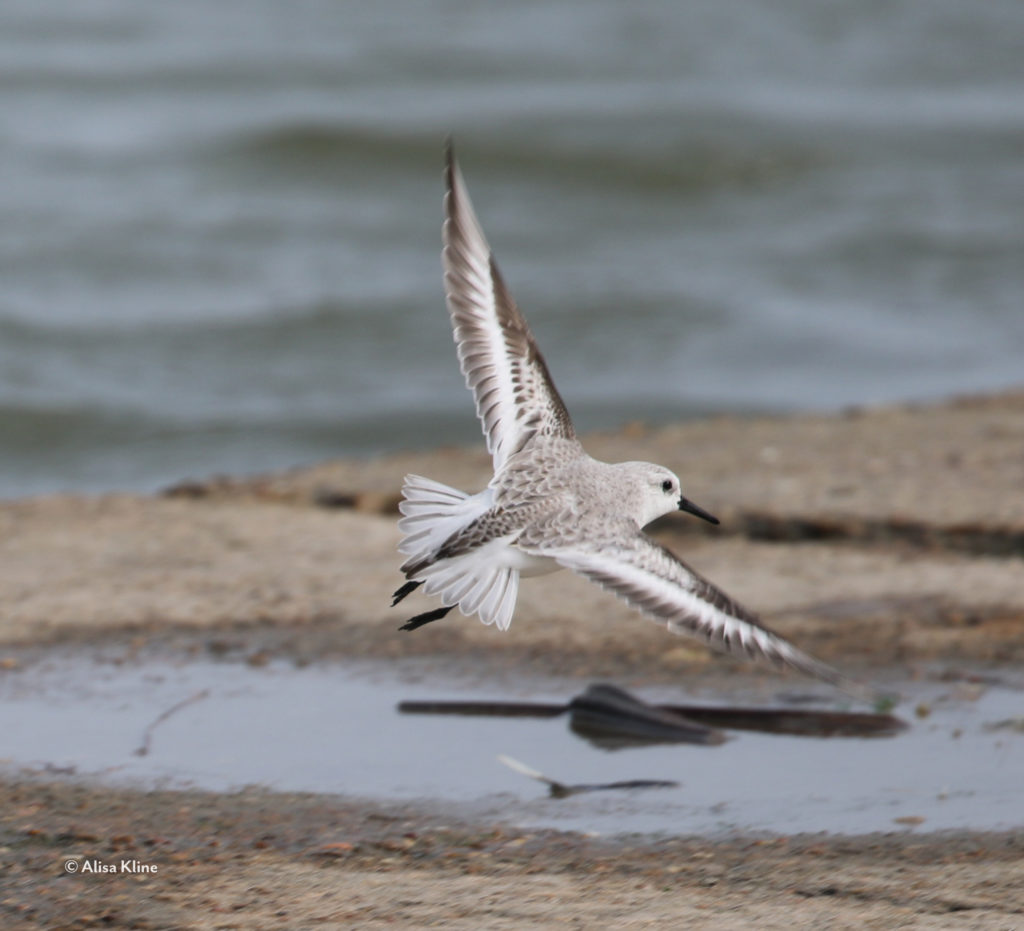
This is the view of sanderlings that should be sort f familiar. It is the look they give when they are flying away from you on the beach. I have lots of these photographs 🙁
Galveston’s big four
Sanderlings are one of the four birds that you can pretty much always find on Galveston beaches. Whether you are a birder or not, when you go to Galveston, you will probably notice four species of birds. We have covered the sanderling. They are the little white birds that accompany you on all walks near the water. The second bird you cannot miss are the brown pelicans. Unmistakable in their prehistoric presentation, and entertaining in their military-style flyovers, they are without a doubt one of the most fun birds anywhere.
The third bird you will always find on Galveston beaches is the one that wanders the edge of the water with you and the sanderlings but it isn’t a sanderling because it is much too large and it isn’t a pelican because it just isn’t. That one is a willet.
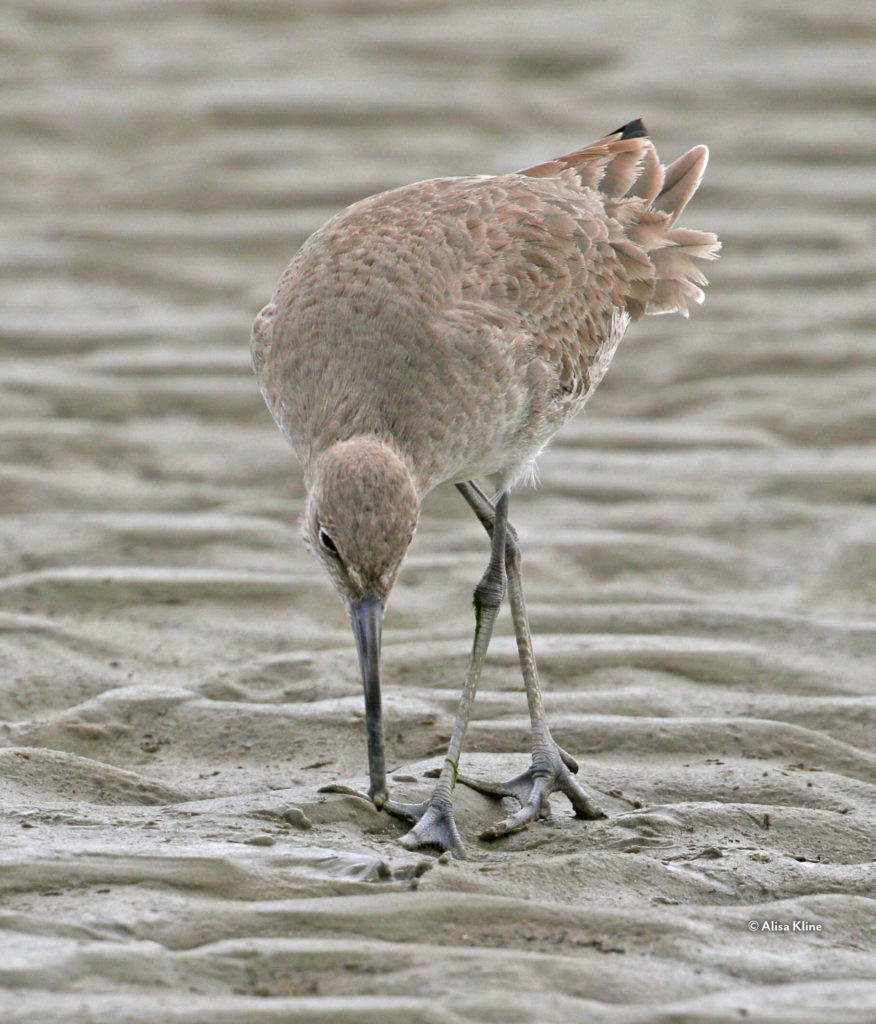
This is a confusing willet because it is standing in a way that makes it look interesting. I have lots of photographs of willets trying to look interesting.
I would like to have something interesting to say about willets. But, honestly, I resent them. I see a larger shorebird and convince myself that it is interesting (perhaps a whimbrel or marbled godwit). I take a photo or two with a long lens and once again, I have captured a willet. So here are a few not terrible photos of willets. For anyone old enough to remember Monty Python, think “the larch.”
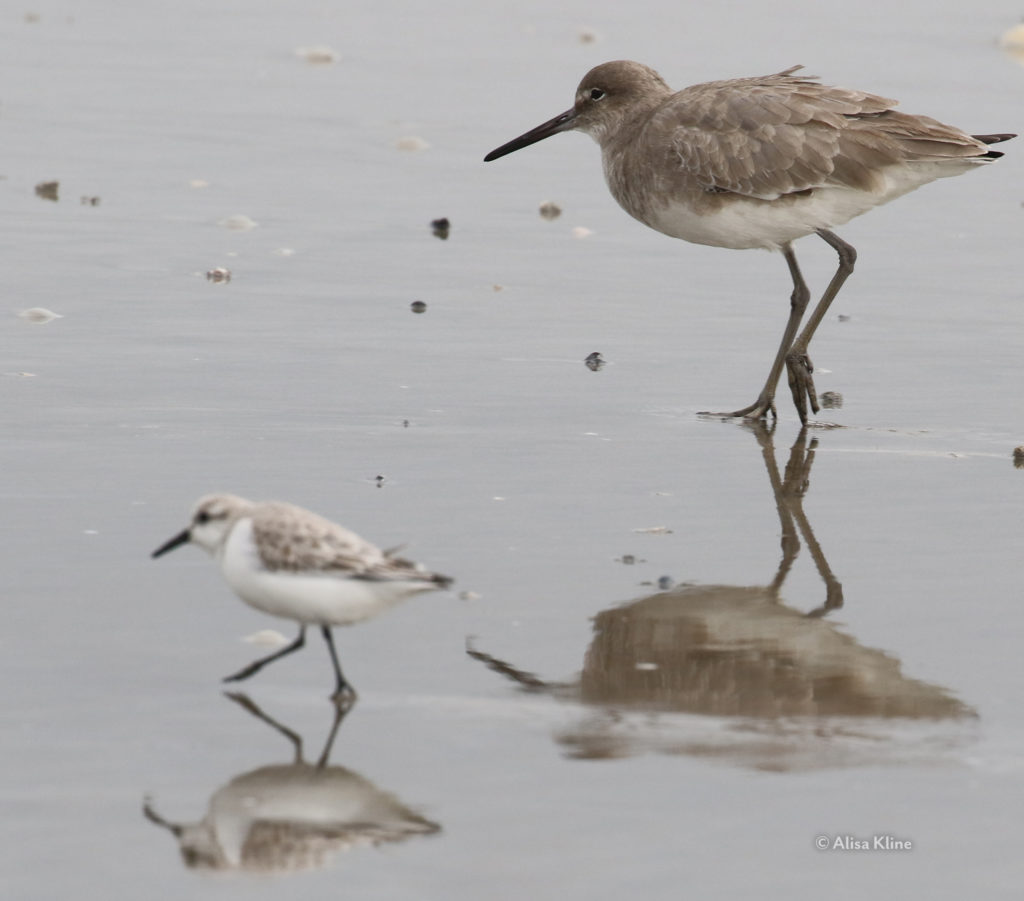
This is a willet standing next to a sanderling. See how much bigger the willet is. See how that isn’t all that interesting.
Willets also fly, which is when they most make you look at them.
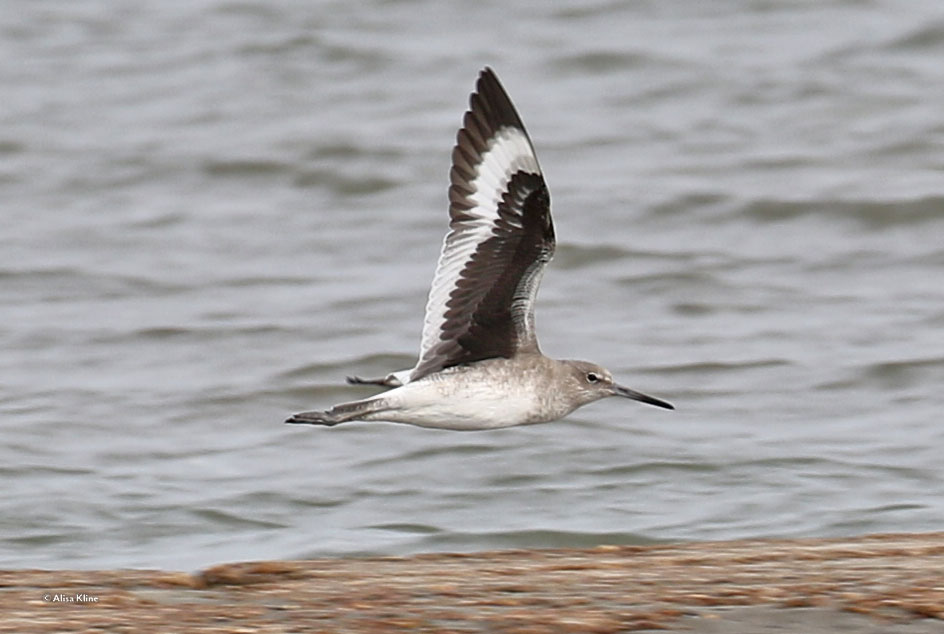
OK, I’ll admit the wing pattern is kind of nice.
The fourth bird you will always see are seagulls. Very good birders can tell one gull from another. I am not a very good birder. But I do have bunches of photographs of seagulls eating. Such as this one. Notice the sanderling looking on, almost as though she is trying to figure out how that eating thing is done. Why do I have no photos of sanderlings eating?


